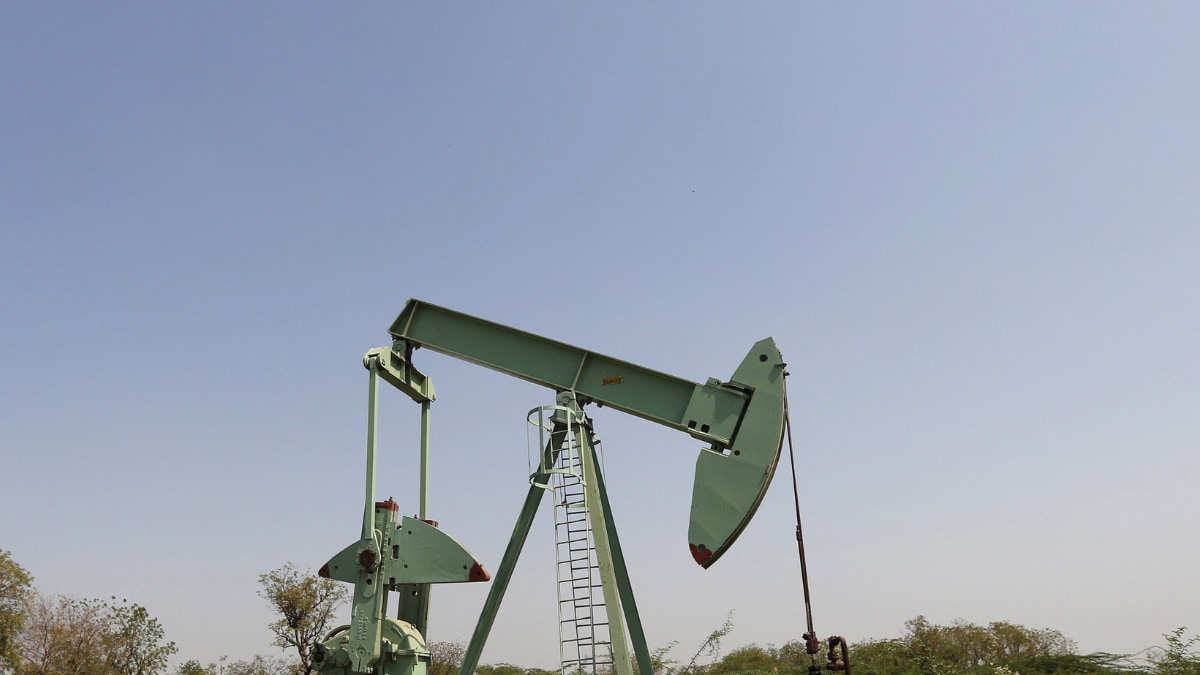Oil Prices Rise 1 Percent on Saudi Plan to Deepen Output Cuts from July
Last Updated: June 05, 2023, 23:55 IST
New York, United States of America (USA)

FILE PHOTO: An Oil and Natural Gas Corp’s (ONGC) well is pictured in an oil field on the outskirts of the western city of Ahmedabad, India, February 10, 2016. (Image: REUTERS)
Brent crude futures were up $1.23, or 1.6%, at $77.36 a barrel by 1:12 p.m. EDT (1712 GMT) after touching a session high of $78.73
Oil prices rose by more than 1% on Monday after the world’s top exporter Saudi Arabia pledged to cut production by a further 1 million barrels per day (bpd) from July to counter macroeconomic headwinds that have depressed markets.
Brent crude futures were up $1.23, or 1.6%, at $77.36 a barrel by 1:12 p.m. EDT (1712 GMT) after touching a session high of $78.73.
U.S. West Texas Intermediate crude gained by $1.11, or 1.6%, to $72.85 after hitting an intraday high of $75.06.
Both contracts extended gains of more than 2% on Friday after the Saudi energy ministry said the kingdom’s output would drop to 9 million bpd in July from about 10 million bpd in May. The cut is Saudi Arabia’s biggest in years.
The voluntary cut is on top of a broader deal by the Organization of the Petroleum Exporting Countries (OPEC) and producers including Russia to limit supply into 2024 as the OPEC+ group seeks to boost flagging oil prices.
Fatih Birol, head of the International Energy Agency (IEA), on Monday said that the chance of higher oil prices had increased sharply after the new OPEC+ deal.
OPEC+ pumps about 40% of the world’s crude and has cut its output target by a total of 3.66 million bpd, amounting to 3.6% of global demand.
“The market is still trying to assess the impact of what the Saudi production cut actually means,” said Phil Flynn, an analyst at Price Futures Group. “Oil seems to be taking the news as very bullish, and it is.”
SEB analyst Bjarne Schieldrop said the market reaction on Monday was relatively muted after the previous cut by OPEC+ failed to prop up prices for long.
Consultancy Rystad Energy said the additional Saudi cut is likely to deepen the market deficit to more than 3 million bpd in July, which could push prices higher in the coming weeks.
Goldman Sachs analysts said the output deal was “moderately bullish” for oil markets and could boost December 2023 Brent prices by between $1 and $6 a barrel depending on how long Saudi Arabia maintains output at 9 million bpd.
“The immediate market impact of this Saudi cut is likely lower, as drawing inventories takes time, and the market likely already put some meaningful probability on a cut today,” the bank’s analysts added.
Saudi Arabia raised the prices of its flagship crude Arab Light to Asian buyers in July to a six-month high, following its output cut pledge.
Many of the OPEC+ reductions will have little real impact as the lower targets for Russia, Nigeria and Angola bring them into line with their actual production levels. In contrast, the United Arab Emirates (UAE) was allowed to raise output targets by 200,000 bpd to 3.22 million bpd to reflect its larger production capacity.
(This story has not been edited by News18 staff and is published from a syndicated news agency feed – Reuters)
For all the latest business News Click Here


